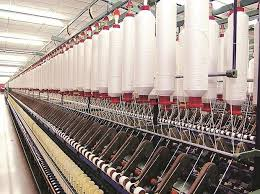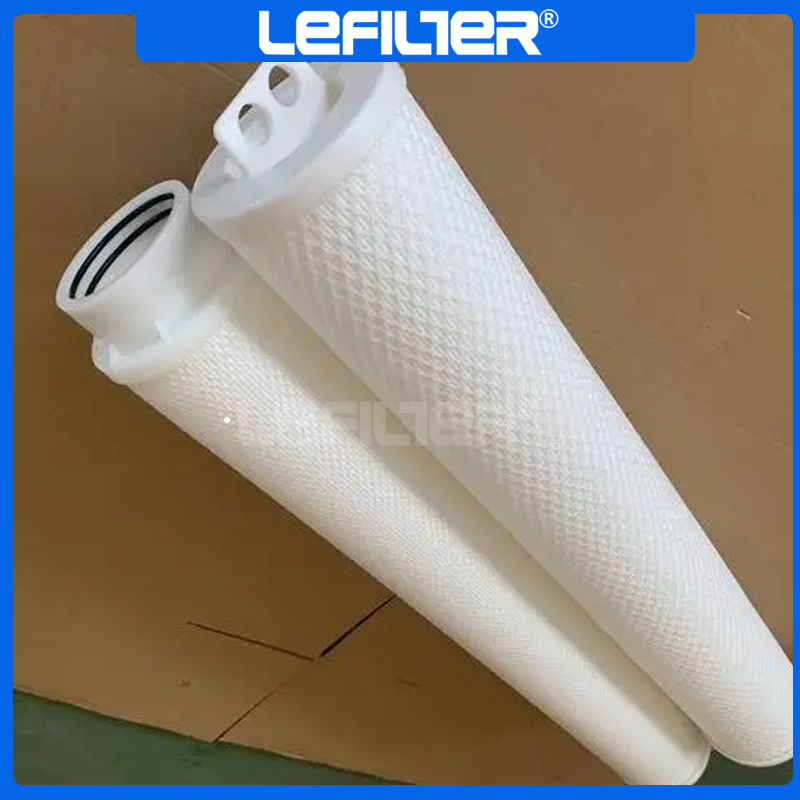Cartridge Filter Housing in the Textile Industry
DATE:2024-10-23 Number of views: 1 Source:dongwenhui
In the textile industry, ensuring the purity of water and the quality of dyes used in fabric production is paramount. Contaminants in water can adversely affect dyeing processes and the overall quality of textiles. Cartridge filter housings play a critical role in achieving effective dye filtration and water purification, contributing to the sustainability and efficiency of textile manufacturing. We explore the significance of cartridge filter housings in the textile industry, their applications, benefits, and emerging trends.

Understanding Cartridge Filter Housing
Cartridge filter housing is a containment system designed to hold filter cartridges that remove impurities from liquids. Typically made from materials like stainless steel or high-density plastics, these housings are built to withstand the rigors of industrial environments, including exposure to various chemicals and high pressures.
The primary function of cartridge filter housings in the textile industry is to ensure that the water and dyes used in production processes are free from contaminants. This is essential for maintaining consistent quality and ensuring compliance with environmental regulations.

Importance of Water Purification in Textile Manufacturing
Water plays a critical role in textile manufacturing, particularly during dyeing, washing, and finishing processes. The quality of water directly influences the final product, and any impurities can lead to defects such as uneven dyeing, color variations, and reduced fabric strength.
The need for water purification in textile manufacturing is driven by several factors:
Quality Control: High-quality textiles require high-purity water to achieve uniformity and consistency in dyeing and finishing processes. Contaminants can lead to defects that compromise the aesthetic and functional properties of the fabric.
Regulatory Compliance: The textile industry is subject to stringent environmental regulations regarding water usage and discharge. Effective water purification systems, including cartridge filter housings, help ensure compliance with these regulations.
Sustainability: As the industry moves towards more sustainable practices, efficient water purification systems can reduce water consumption and minimize waste.
Applications in Dye Filtration
Dyeing is a crucial step in textile production that involves applying color to fabrics. However, the dyes themselves can contain impurities that affect the quality of the final product. Cartridge filter housings are essential in this context:
Pre-Filtration: Before dyes are applied to fabrics, they are often pre-filtered to remove larger particulates and impurities. Cartridge filter housings ensure that only clean, pure dyes are used, which enhances color consistency and quality.
Post-Dyeing Filtration: After the dyeing process, the water used must be filtered to remove residual dyes and impurities. This is important not only for the quality of the next batch of fabric but also for compliance with wastewater treatment regulations.
Protection of Equipment: By preventing contaminants from entering dyeing machines and related equipment, cartridge filter housings help extend the life of costly machinery and reduce maintenance needs.

Water Filtration Systems in Textile Production
Cartridge filter housings are an integral part of water filtration systems used in textile manufacturing. These systems typically include several stages of filtration to ensure that water meets the required purity standards.
Sediment Filtration: The first stage often involves removing larger particles such as dirt, sand, and silt. This is crucial for protecting downstream filtration systems and ensuring optimal performance.
Activated Carbon Filtration: In some cases, activated carbon filters are used to remove chlorine and other organic compounds that can interfere with dyeing processes. Cartridge filter housings designed for activated carbon filters help ensure that water is free from these harmful substances.
Microfiltration and Ultrafiltration: Advanced filtration technologies, such as microfiltration and ultrafiltration, can be employed to remove smaller particles and microorganisms. These processes ensure that the water used in textile production is of the highest purity.
Benefits of Using Cartridge Filter Housings
The adoption of cartridge filter housings in the textile industry offers several benefits:
Enhanced Quality: By ensuring the purity of water and dyes, cartridge filter housings contribute to higher quality textiles, reducing defects and improving customer satisfaction.
Operational Efficiency: Clean water systems operate more efficiently, reducing the frequency of equipment maintenance and downtime caused by clogging or contamination.
Cost Savings: Investing in effective filtration systems can lead to long-term cost savings by minimizing waste, reducing the need for expensive repairs, and enhancing the overall efficiency of production processes.
Sustainability: Efficient water purification systems contribute to sustainability efforts in the textile industry by reducing water consumption and ensuring compliance with environmental regulations.

Maintenance of Cartridge Filter Housings
Proper maintenance of cartridge filter housings is essential to ensure optimal performance in textile applications. Key maintenance practices include:
Regular Inspections: Routine checks for signs of wear, clogging, or damage can prevent unexpected failures. Monitoring pressure drops across the filter can indicate when a cartridge needs replacement.
Scheduled Replacements: Establishing a replacement schedule based on usage and performance metrics is vital for maintaining filtration efficiency and preventing contamination.
Cleaning and Sanitization: Regular cleaning and sanitization of filter housings help prevent microbial growth and maintain fluid purity.
The design of cartridge filter housings often allows for easy cartridge changes, minimizing downtime during maintenance.
Sustainability and Environmental Considerations
The textile industry is increasingly focused on sustainability, and cartridge filter housings play a key role in these efforts:
Water Conservation: Effective water purification systems help reduce overall water consumption by recycling and reusing water in production processes.
Compliance with Regulations: By ensuring that wastewater is properly treated, cartridge filter housings contribute to compliance with environmental regulations, reducing the risk of fines and legal issues.
Waste Reduction: Efficient filtration systems help minimize waste generation by ensuring that dyes and chemicals are used effectively, resulting in cleaner production processes.
Future Trends in Textile Filtration Technologies
As the textile industry evolves, advancements in filtration technologies are expected. Potential future trends include:
Smart Filtration Systems: The integration of IoT technology could allow for real-time monitoring of filter performance and automatic adjustments to optimize filtration efficiency.
Advanced Materials: The development of new filter media with enhanced contaminant removal capabilities may improve the effectiveness of cartridge filter housings.
Sustainable Practices: Continued emphasis on sustainability may drive the development of environmentally friendly filter materials and designs that minimize waste and resource consumption.
Conclusion
Cartridge filter housings are essential components in the textile industry, particularly in dye filtration and water purification processes. By ensuring the removal of contaminants, these filtration systems contribute to the production of high-quality textiles, enhance operational efficiency, and support sustainability efforts. As the industry continues to innovate, the importance of effective filtration solutions will only grow, underscoring the role of cartridge filter housings in modern textile manufacturing.
FAQ
What is a cartridge filter housing?
A cartridge filter housing is a device that contains filter cartridges used to remove contaminants from liquids in various applications, including textile manufacturing.Why is water purification important in textile manufacturing?
Purified water is essential for achieving uniformity and consistency in dyeing and finishing processes, directly affecting the quality of the final product.What types of filters are commonly used in cartridge filter housings?
Common filters include sediment filters, activated carbon filters, microfiltration, and ultrafiltration, each designed for specific contaminant removal needs.How often should cartridge filters be replaced?
Replacement frequency depends on usage and system performance; regular monitoring and maintenance are crucial to ensure optimal filtration.What materials are cartridge filter housings made from?
Cartridge filter housings are typically made from durable materials like stainless steel or high-density plastics to withstand industrial conditions.How do cartridge filter housings contribute to sustainability in textiles?
They help reduce water consumption, ensure compliance with environmental regulations, and minimize waste generation.What are the maintenance requirements for cartridge filter housings?
Regular inspections, scheduled replacements, and cleaning/sanitization are essential for maintaining optimal performance.What future trends are anticipated in textile filtration technologies?
Trends may include smart filtration systems, advanced materials, and a focus on sustainable practices to minimize environmental impact.
Industry Solutions
Pure Water /Ultra Pure Water System


